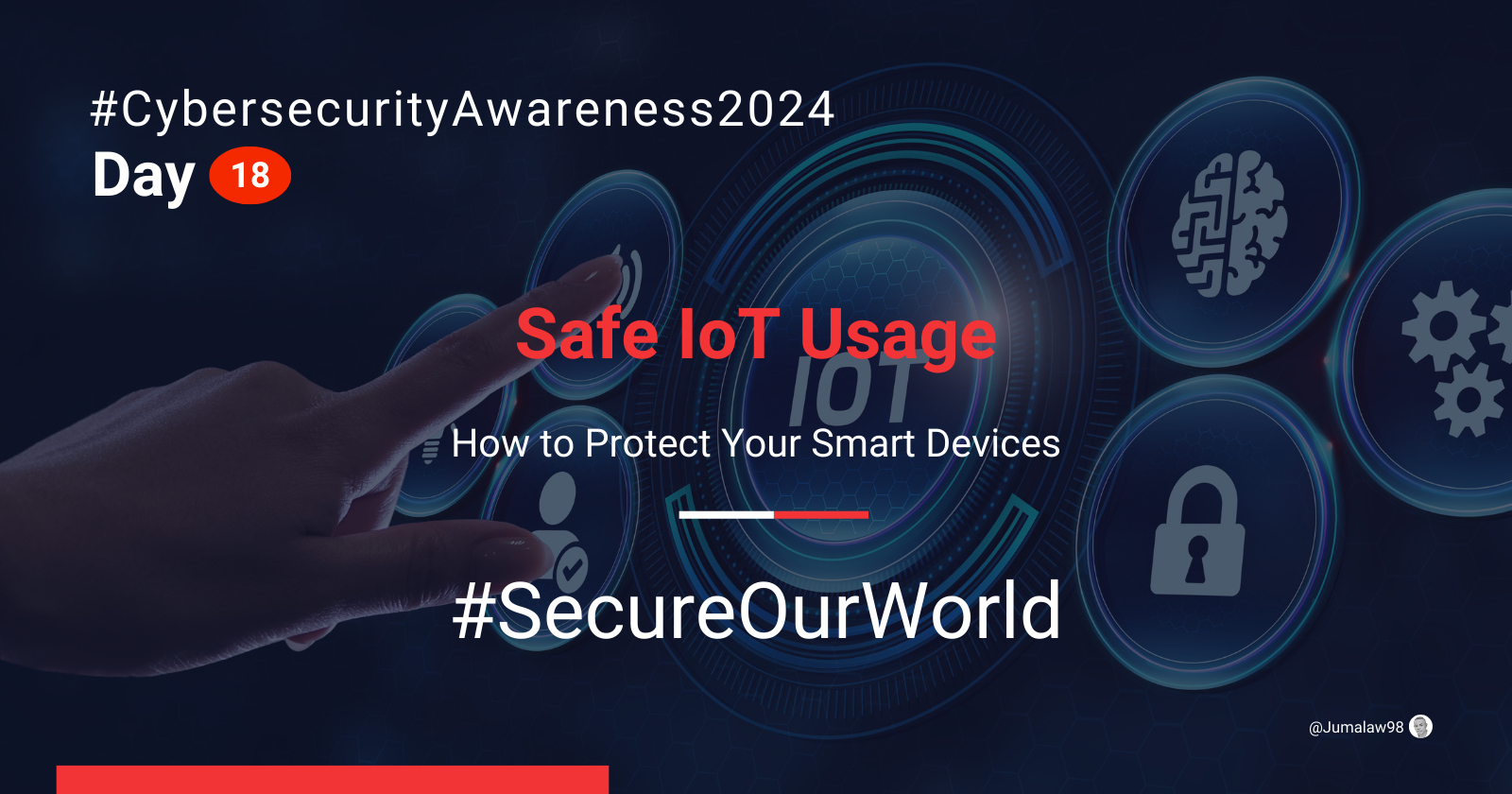Day 18: Keep Your IoT World Safe
 Lawrence Juma "Jumalaw98"
Lawrence Juma "Jumalaw98"
“Is your smart fridge keeping tabs on you? Maybe.”
Welcome to the Internet of Things (IoT), where your thermostat, fridge, and coffee machine might chat behind you. Although operating your house with just voice commands is amazing, there is a drawback. Internet of Things devices could be a conduit for cybercriminals if they aren't adequately secured. Yes, your smart lightbulb can potentially be the weak point in your security system!
Let's explore today how to secure your smart devices and prevent hackers from accessing your connected house.
What Is IoT?
The Internet of Things (IoT) refers to common items connected to the Internet and may communicate and share information. These include smart speakers, security cameras, wearables, thermostats, door locks, and more.
While these devices make life more convenient, they can also introduce security risks because cybersecurity practices often overlook them.
Fun fact: The number of IoT devices worldwide is expected to hit 30.9 billion by 2025. Imagine how many doors open for cybercriminals if we don’t secure them properly!
Why Should You Care About IoT Security?
Ever think about your coffee machine getting hacked? Well, it’s possible. IoT devices are often seen as "less risky" and don’t get the same security attention as your laptop or phone. The only issue is that these devices are connected to your home network. Hackers can access additional devices on your network once they gain access to one of them.
5 Tips to Secure Your IoT Devices
Here are some simple steps you can take to ensure that your smart devices aren’t inviting hackers over for coffee:
- Using strong, unique passwords for each IoT device is a crucial first defense against hackers who know these default usernames and passwords.
IoT devices require regular updates to fix security flaws, so turn on automatic updates or check for manufacturer firmware updates.
If your router allows, create a separate Wi-Fi network for IoT devices to prevent hackers from accessing sensitive gadgets like computers or smartphones.
Disable unnecessary features on IoT devices, such as remote access, to reduce their vulnerability to attacks.
For enhanced security, use two-factor authentication (2FA) on your IoT device, which requires a password and a second verification step, like a text message code.
Common IoT Security Risks
Botnets: Hackers can take control of IoT devices and use them in large-scale attacks, like the infamous Mirai botnet, which caused widespread internet outages by targeting IoT devices.
Weak Encryption: Some IoT devices don’t encrypt the data they collect, leaving your personal information vulnerable to theft.
No Software Updates: Some IoT manufacturers don't prioritize security updates, making older devices especially risky.
How to Spot an IoT Breach
I'm not sure if one of your devices has been compromised. Here are a few telltale signs:
Unusual Device Behavior: If your smart light turns on or off at odd hours or your thermostat resets itself, it could be a sign that someone else is controlling it.
Increased Internet Usage: A spike in your network’s data usage, especially when you’re not home, could indicate a hacked device.
Slow Network Performance: A compromised IoT device might hog bandwidth, slowing down your internet connection.
Keep Your IoT World Safe
The convenience of IoT devices is undeniable, but so are the risks they pose. With billions of these devices connecting to the internet, securing them properly is critical. Remember, it only takes one unsecured device to give hackers access to your entire network.
So, go ahead and check on your smart fridge—it needs a security update!
#IoTSecurity #SmartDevices #CyberAwareness #SecureOurWorld #CyberSecurityMonth
Subscribe to my newsletter
Read articles from Lawrence Juma "Jumalaw98" directly inside your inbox. Subscribe to the newsletter, and don't miss out.
Written by

Lawrence Juma "Jumalaw98"
Lawrence Juma "Jumalaw98"
Growth mindset in the tech field, Front-end "React Js, Vue Js", Project Manager, Digital Marketer.